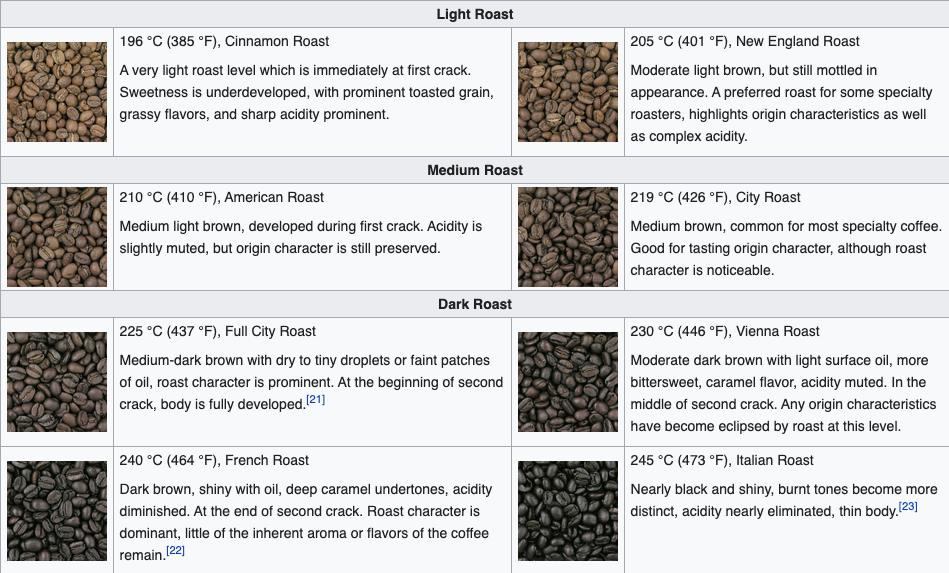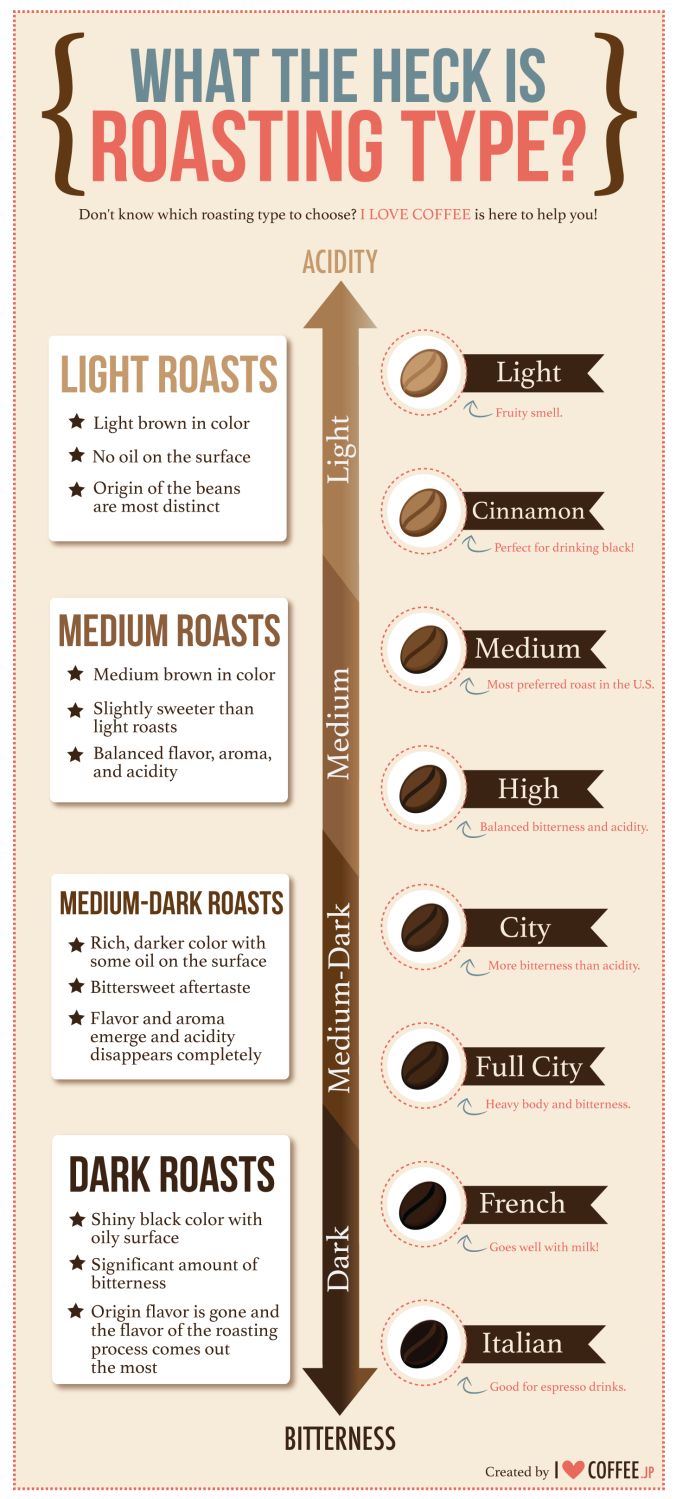Coffee Roast Types: Explained

Preferences of coffee roast tend to vary widely throughout the United States and the rest of the world. Because there is not an exact standard of terminology regarding coffee roast, roasted coffee is viewed through the lense of the region’s preferences and language. This means that what one group of people considers a light roast, may be considered a medium roast to another group, and so on.
I dove into this topic under the impression American coffee drinkers as a whole preferred more darkly roasted beans compared to the rest of the world. However, the further I researched, I learned I was very wrong. As it turns out, the majority of American coffee drinkers prefer a medium roasted bean. That being said, the USA is a large country with a highly varied demographic, so it only makes sense that the population’s coffee preferences vary accordingly.
Studies show that light to medium roasts are most popular in the northeastern region of the United States. Hence the term New England Roast.
When coffee beans are roasted, the beans transform from tiny, green, and spongy, to larger, hard, and depending on roast, glossy. Skillfully trained roasters listen for specific sounds, indicating the toastiness of the beans, (think the sound popcorn popping).
Light Roast:
Most light roast coffee is only roasted until the first crack or pop of the beans. These beans are light tan in color and have no oil on their surface. They have little to no bitterness, high acidity levels, and they taste of toasted grains. Caffeine content is highest in lightly roasted beans, but only marginally.
Some light roasts are even removed before the first cracking sound.
Examples of this are:
Light City
Half City
Cinnamon
Medium Roast:
Medium roasts may be the most difficult type of roast to get right. Roasters roast the beans until after the first crack, but just before the second. This is incredibly challenging and requires large amounts of training, precision, and attention. A batch of beans can turn from perfect to ruined in a matter of seconds. These beans are roughly the color of milk chocolate and have a light oily sheen on their surface. Medium roasts are most commonly used for specialty coffee because the notes of the origin are most noticeable. The acidity and bitterness are balanced, and they are slightly sweeter than light and dark roasts.
Some types of medium roasts are:
American
Breakfast
Medium
High
City
Dark Roast:
Dark roast names may be the most varied compared to its lighter counterparts. These styles are roasted until the after the second crack or pop of the beans. They are far higher in bitterness than lighter roasts, but much lower in acidity. The beans are roughly the color of dark chocolate and have an oily shine on the surface. Unfortunately, there’s a lot of conflicting information regarding the order or darkness between the different dark roasts. It ultimately depends on the origin of beans, roasting location, etc. so the list below may or may not be in an exact order.
That being said, some types of dark roasts are:
Continental
New Orleans
European
Espresso
Viennese
French
Spanish
Italian
There is an abundance of information regarding coffee in general, and that can be incredibly overwhelming. Fortunately, there’s something out there specifically designed to help coffee lovers and educators further understand the complexities and flavor profiles of different coffee roasts.
World Coffee Research partnered with Texas A&M University and Kansas State University Sensory Analysis Center to create the WCR Sensory Lexicon, which is the basis for the new Coffee Taster’s Flavor Wheel.
When it comes down to it, there’s really no right or wrong roast. It’s all about personal preference and finding what works best for you. It’s totally fine to have a favorite roast you stand by, and it’s also completely cool if you like to change it up depending on the day.
What’s most important is you find out what you like. We have an assortment of beans & equipment to experiment with, and we’re excited to help you through your coffee experience.
References
https://www.ronnoco.com/blogs/news/coffee-flavor-trends-among-different-demographics
https://nationalcoffee.blog/2015/11/19/a-guide-to-roasting-types/
https://www.ncausa.org/About-Coffee/Coffee-Roasts-Guide
https://www.coffeecrossroads.com/coffee-101/coffee-roasts-from-light-to-dark



No Comment